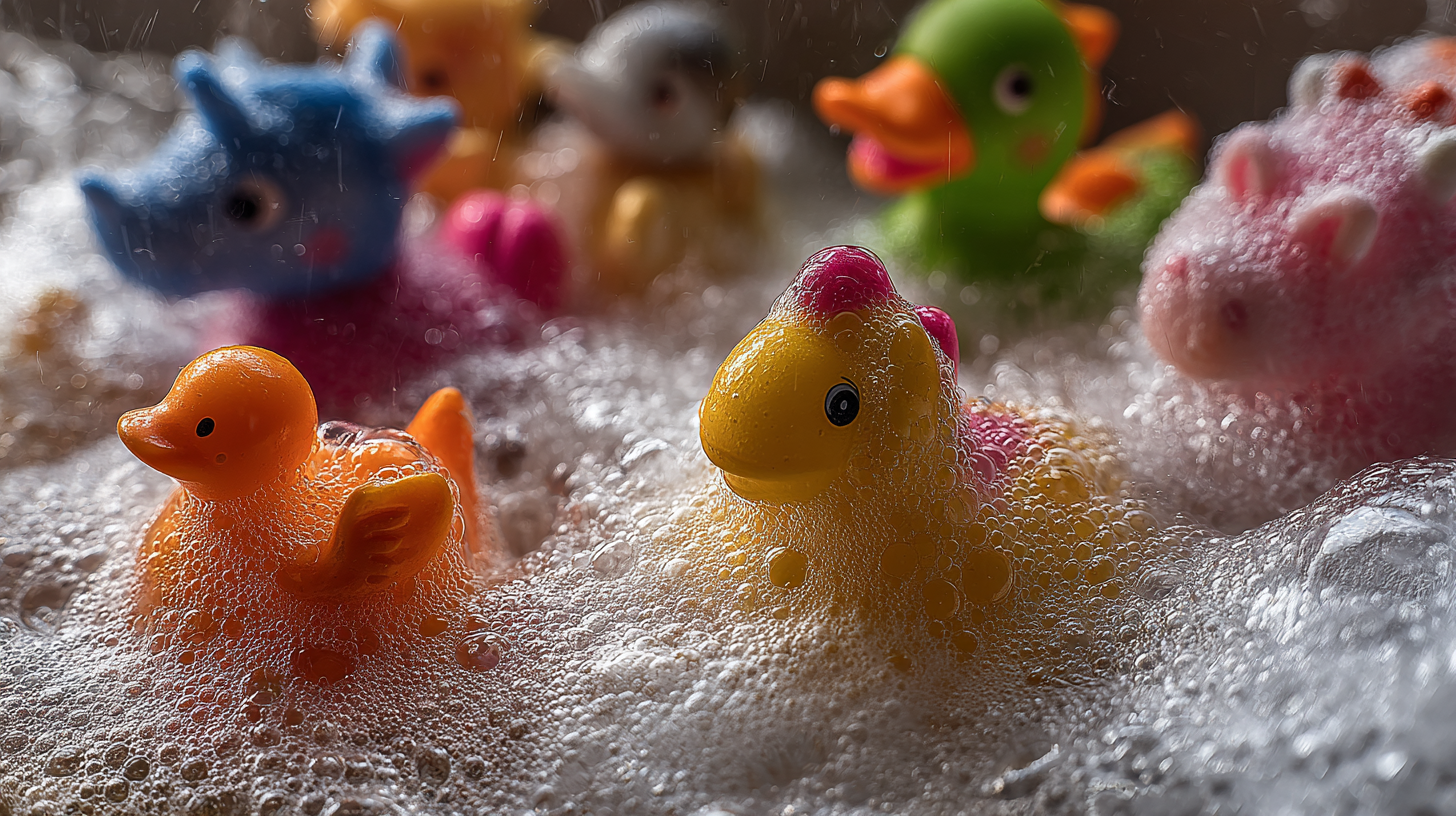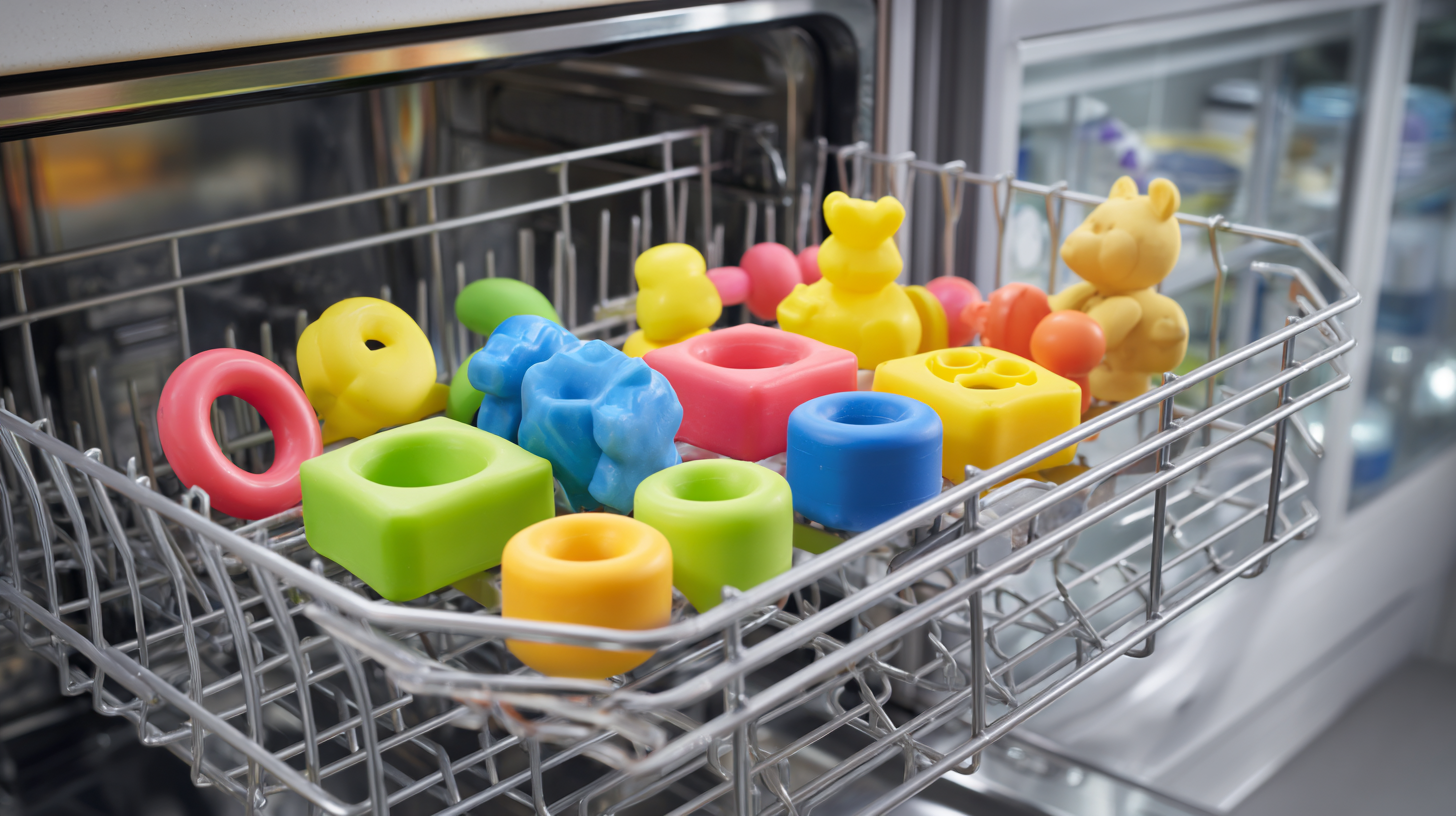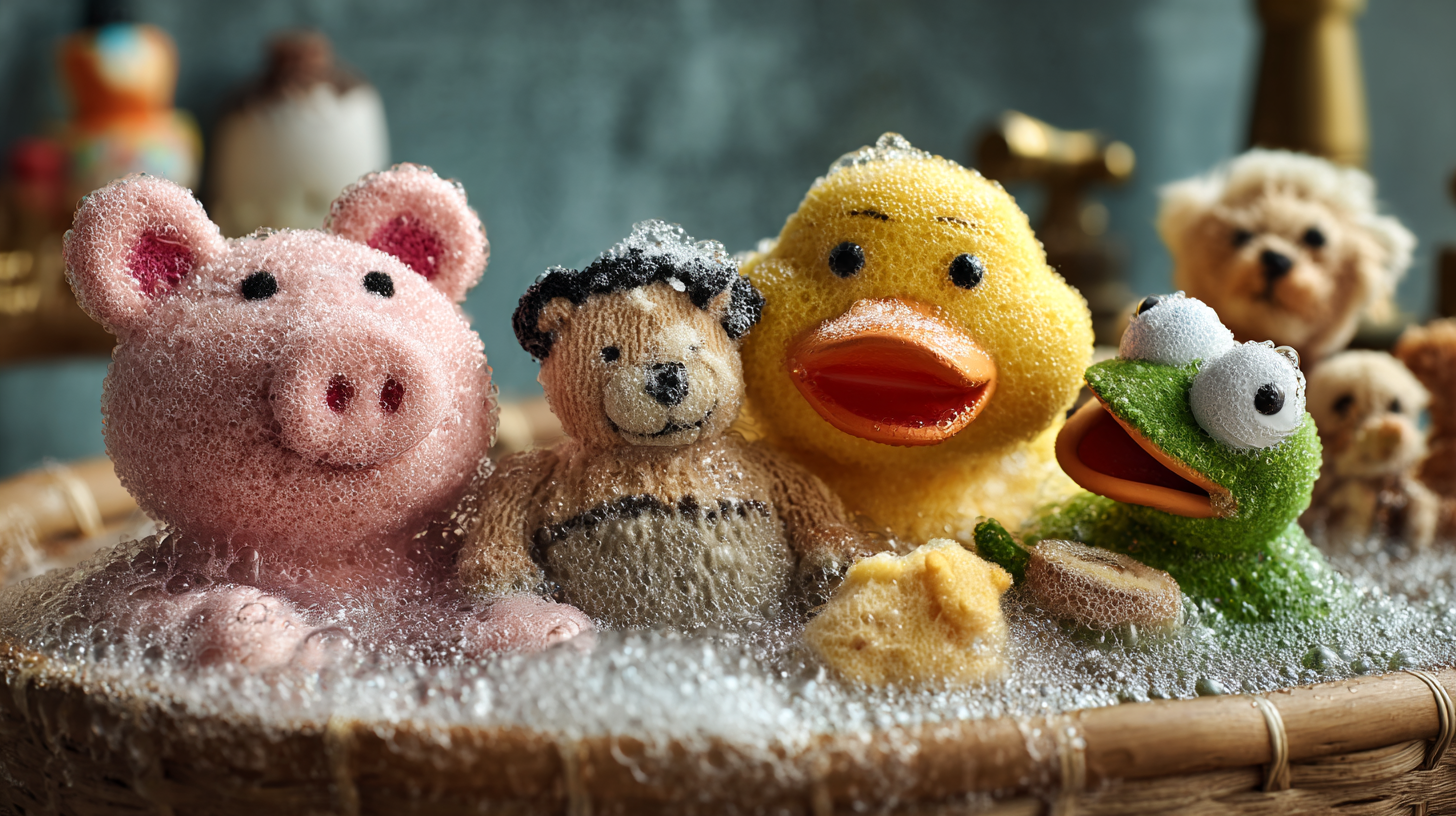Babies go through the world by touching and mouthing everything around them, especially their toys. That means toys quickly collect drool, food, dust, and germs.
As a parent, it’s natural to wonder how to clean baby toys safely without using harsh chemicals or damaging them. The truth is, keeping toys clean doesn’t have to be difficult.
With the right approach, you can handle everyday messes and deeper cleanings with ease.
You’ll find clear steps for cleaning plastic, plush, wooden, and electronic toys, plus practical tips for building an easy routine that keeps playtime safe and worry-free.
Why Cleaning Baby Toys Matters
Babies put almost everything in their mouths, from their favorite stuffed toy to blocks scattered on the floor.
That means toys can quickly become covered in drool, food crumbs, and everyday dirt, making them easy carriers of germs.
Cleaning toys regularly keeps those germs under control and lowers the chances of your little one picking up an illness.
Since a baby’s immune system is still developing, safe and consistent cleaning plays a big role in protecting their health.
It also gives you peace of mind knowing that the things your baby chews, hugs, and touches every day are fresh, clean, and safe to play with.
Over time, this simple habit helps create a healthier environment for both your child and your home.
General Cleaning Methods for Most Toys
Most baby toys can be cleaned with simple, safe methods at home. These approaches remove dirt, drool, and germs without damaging the toys.
1. Soap + Warm Water

This is the most common way to clean everyday toys and works well for non-electronic items.
Steps:
- Fill a basin or sink with warm water.
- Add a few drops of mild, baby-safe soap.
- Place the toys in the water and let them soak for a few minutes.
- Use a soft cloth or brush to scrub away dirt and drool.
- Rinse the toys thoroughly under running water until no soap remains.
- Place them on a clean towel to air dry completely.
Tip: Always check labels first. Soap residue can upset a baby’s stomach if chewed.
2. Air Drying

Air drying is important for keeping toys mold-free after washing.
Steps:
- Place freshly cleaned toys on a clean towel.
- Spread them out to allow good airflow between each toy.
- Leave them in a well-ventilated spot, like near a window or fan.
- Rotate larger toys to ensure all sides dry evenly.
Tip: Never store toys when damp, as this encourages mold growth.
3. Dishwasher (When Safe)

Some hard plastic toys can be safely cleaned in the dishwasher, saving time and effort.
Steps:
- Check the toy’s label or packaging for a dishwasher-safe symbol.
- Place toys securely on the top rack of the dishwasher.
- Select a gentle or sanitize cycle for the best results.
- Remove toys once the cycle finishes and let them air dry fully.
Tip: This method works best for rattles, blocks, and teething toys. Avoid it for delicate or painted items.
Cleaning by Toy Type
Not all toys can be cleaned the same way. Each material needs a safe method that removes germs without causing damage or wear.
| Toy Type | Cleaning Method | Disinfecting Option | Extra Tips |
|---|---|---|---|
| Hard Plastic Toys | Wash with warm soapy water using a sponge or brush. Many are dishwasher safe. | Vinegar-water solution or diluted bleach (after illness). | Always check the label before dishwashing. Rinse thoroughly after bleach use. |
| Electronic/Battery Toys | Wipe surfaces with a damp cloth and mild soap. Dry immediately with a towel. | Disinfectant wipes labeled safe for kids. | Keep battery compartments dry to prevent rust. Never soak. |
| Stuffed/Plush Toys | Place in a laundry bag and wash on a gentle cycle with mild detergent. Air dry. | Use a steamer or vacuum for light disinfecting. | Air drying preserves shape and stuffing. |
| Wooden Toys | Wipe with a cloth dipped in a vinegar-water solution. Avoid soaking. | Vinegar-water solution only (avoid harsh chemicals). | Air dry quickly in an open space to prevent warping or cracks. |
How Often Should You Clean Baby Toys?
Babies love putting toys in their mouths, which makes regular cleaning essential. Keeping their toys clean helps protect them from germs and keeps playtime safe.
- Mouthed toys: Rinse or wipe them daily to remove drool, crumbs, and bacteria.
- Other toys: Clean every few days if they’re not mouthed often.
- Stuffed animals: Wash weekly to remove dust, dirt, and allergens.
- Sleep toys: Clean more frequently to maintain hygiene.
- After illness: Disinfect all toys your baby touched or mouthed.
A few minutes of daily cleaning can go a long way in keeping your child’s play environment healthy and germ-free
Natural vs. Chemical Cleaning: Which Is Best?
Both natural and chemical methods work, but each has strengths and limits. The table below shows when to use them.
| Feature | Natural Cleaning | Chemical Cleaning |
|---|---|---|
| Pros | Natural cleaning is safe for babies, eco-friendly, gentle on toy materials, and affordable to make at home. | Chemical cleaning kills strong germs, bacteria, and viruses, is CDC-recommended after illness, and works quickly on hard surfaces. |
| Cons | It may not eliminate stronger germs or viruses, and the vinegar smell can sometimes linger until the toys are dry. | It requires careful dilution and rinsing, is not safe for all toy types, and can damage materials if used too often. |
| Best Use | Best suited for everyday cleaning of wooden, plastic, and bath toys, as well as routine upkeep between deep cleans. | Best suited for disinfecting after illness, cleaning shared playgroup toys, and sanitizing hard plastic or electronic toys. |
Experiences from Parenting Communities
Parents often share practical toy-cleaning hacks in forums and groups. Here are some of the most common tips:
A parent on Reddit shared that they soak plastic blocks in warm water with dish soap each evening, then air dry overnight.
One parent in a Facebook group washes stuffed animals weekly in a laundry bag on a gentle cycle and uses a steamer for quick refreshes.
Several parents said they rely on disinfectant wipes for spot cleaning during the day, saving deep washes for later.
Many agree that building small habits, like wiping down mouthed toys daily, keeps cleaning simple and manageable.
Conclusion
Keeping baby toys clean doesn’t have to feel like a big chore. Once you find a simple routine that works, it becomes part of your everyday care, just like feeding or bedtime.
Regular cleaning keeps germs away, helps your baby stay healthy, and gives you peace of mind knowing their playthings are safe and fresh.
Start small – wipe daily toys, wash plush ones weekly, and disinfect after illness. You’ll soon notice how much easier it feels to maintain a clean, happy play area.
If you found these tips helpful, share them with other parents or caregivers. A few simple habits can make a big difference in keeping your baby’s world healthy and safe.










